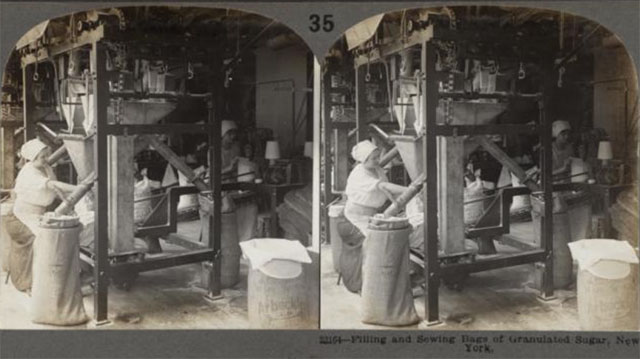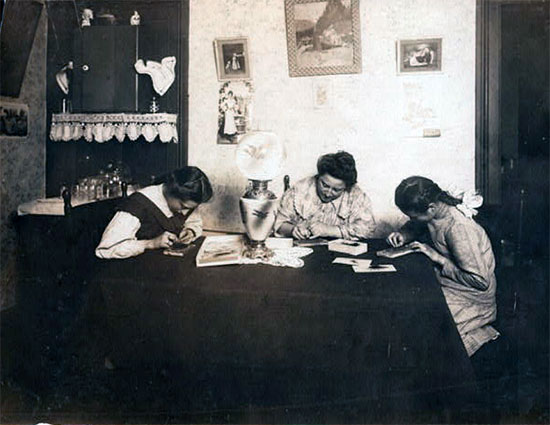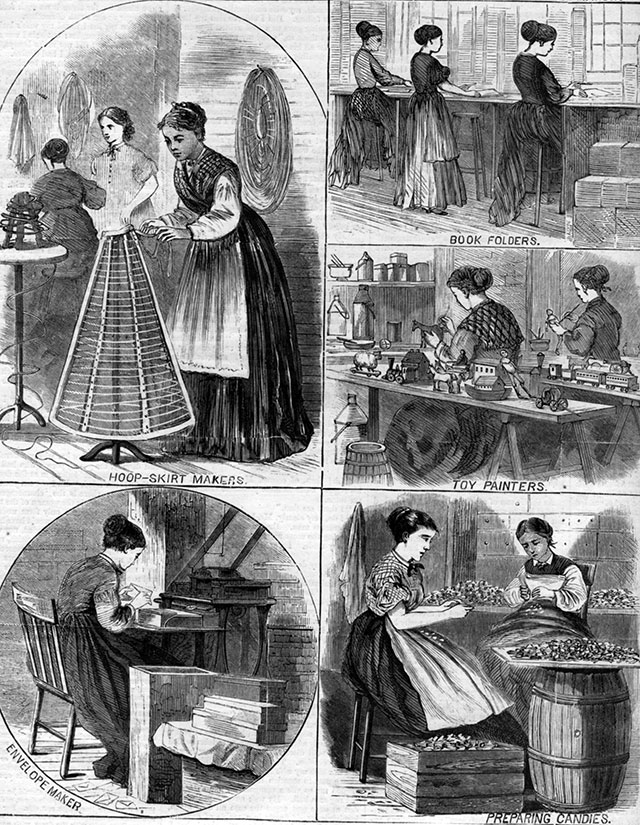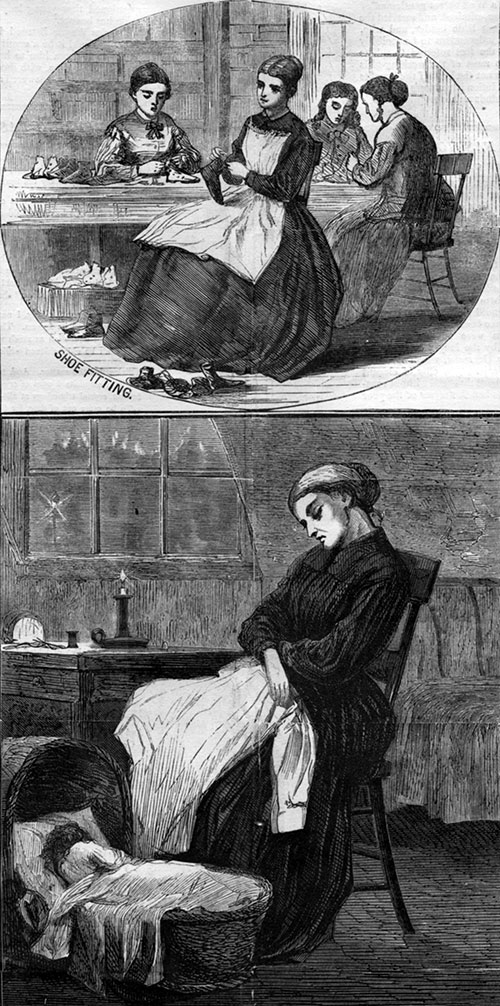
| Working Women | |
| HOME - Occupations | |
|
Women's Work According to entries in the censuses many girls from working class families worked from their early teens until they were married. It is rare to see a married women listed in the censuses with an occupation. Not infrequently widows are listed with an occupation in the City Directories. It is very hard to tell if married woman had careers. An interesting example is the actress Elise von Hoym, the wife of the actor Otto Von Hoym. According to several accounts of the German theater in New York Elise Von Hoym was not only a respected actress and singer but a director of the New Stadt German Theater on the Bowery. Yet the 1855 census listed Otto as an actor and next to Elise's name only wife was entered.
See The German Theater in New York City. An article in the April 18, 1868 Harper's Bazar on WOMEN AND THEIR WORK comments: "It is a grave defect of our generally admirable Census Reports that, while giving minutely the statistics as to the occupations, wages, and condition in life of the male population of the country, they wholly omit anad facts and figures regarding the female portion. | |
 |
| Filling and sewing bags of granulated sugar - New York - not dated (New York Public Library Digital collection
|
 | |
| Brush making late at night. 1912 (New York Public Library Digital collection These type of images were taken to illustrate child labor exploitations. Children too young to be employed outside the home worked at home before and after school. HOWEVER, these images show that "the lady of the house" was also doing her part to compliment the family income.
| |
 | |
| Women and Their Work in the Metropolis Harper's Bazar April 18, 1868 Fur Sewers and Milliners
| |
 | |
| Women and Their Work in the Metropolis Harper's Bazar April 18, 1868 Type setters and paper collar makers
| |
 | |
| Women and Their Work in the Metropolis Harper's Bazar April 18, 1868 Umbrella makers and photograph mounters
| |
 | |
| Women and Their Work in the Metropolis Harper's Bazar April 18, 1868 Hoop skirt makers, toy painters, envelope folders, preparing candies
| |
 | |
| Women and Their Work in the Metropolis Harper's Bazar April 18, 1868 Artificial flower makers, paper box makers, book folders
| |
 | |
| Women and Their Work in the Metropolis Harper's Bazar April 18, 1868 Hat trimmer and silver burnisher.
| |
 |
| Women and Their Work in the Metropolis Harper's Bazar April 18, 1868 Shoe fitter and seamstress The seamstress is the only one portrayed with a child. The Harper's article says that needlework was the bain of the working woman. It payed the least and had the most competition. Female compositors (type setters) earned about $10 per week. Other female workers in the printing industry earned $8 per week. Paper box makers earned $6 per week Paper collar makers earned $5 per week. In 1868 there were more female teachers in New York City schools than male teachers. A female physician in NYC made $15,000. A. T. Stewart & Co. employed a large number of women. They worked as: makers of clothing ($8 per week), cutters and forewomen ($15 per week), piece workers ($6.50 to $12 per week), fur workers ($8 per week), washer women, ironers, and fluters ($7.50 per week), saleswomen (no salary given) and young women with good figures to try on "patterns", and telephone operators. To see the entire article go to Harper's Bazar
|
|
Increase in women in the Work force between 1870 and 1890
Sanitary and Heating Age 1895 |
| Woman in the Work Force in Red Hook Brooklyn mid 1850 to 1900
There were several instances of women in Red Hook, Brooklyn (either married or widowed) running taverns, bars and/or restaurants. Married women were also midwifes and wet nurses. Widows were frequently janitresses, dress makers, seamstresses, laundresses, cooks and hat makers. |
| If you have any suggestions, corrections, information, copies of documents, or photos that you would like to share with this page, please contact me at maggie@maggieblanck.com |
| HOME | |
| Occupations | |
| Copyright by Maggie Land Blanck - This page was created in 2016 - Latest update, June 2016 | |